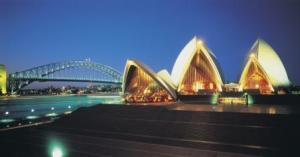This year’s Australian Tourism Exchange (ATE) has confirmed the growing importance of Asia in Australia’s future tourism growth, according to Tourism Australia Managing Director Andrew McEvoy.

Asian markets are proving to be a
winner for Australian tourism
“The latest international arrival figures continue to highlight the growing importance of Asia as the key driver of Australia’s future international tourism growth,” McEvoy said at ATE, held at the Sydney Convention and Exhibition Centre (SCEC) during the first week of April.
“The number of Asian delegates attending this year’s ATE is substantially up on last year, a further sign of the commitment to Australia’s tourism product from the Eastern travel trade.”
During 2010, international visitor arrivals were up from most Asian countries demonstrated by strong regional increases, including double-digit growth from North East Asia, South East Asia, India and Japan.
North East Asia continued to enjoy strong growth, up 14% overall, led by China (up 24%), South Korea (up 18%) and Hong Kong (up 4%). Arrivals from China in particular were aided by increased aviation capacity by a number of the country’s airlines.
Visitors from South East Asia increased 9% during 2010, driven by strong consumer confidence, solid economic growth and, in some markets, increased airline capacity. Indonesia (up 12%), Malaysia (up 12%) and Singapore (up 8%) all performed well. Within Southern Asia, India also delivered a strong recovery in late 2010, with arrivals up 11%.
“Most of the Asian markets were up and finished 2010 strongly, led by China but with strong contributions from a number of other markets in North East and South East Asia, as well as India, which recovered well in 2010,” McEvoy said.
“Last year also saw a turnaround in the Japanese visitor market. Sadly, recent tragic events will obviously have an impact on outbound travel from Japan, although it’s still a little early to put a figure on this.
“The Asian economy’s ability to weather the GFC, plus competitive international air fares and increases in air capacity, has all helped to give us a strong platform from which to tap back into the key family and couples markets,” he said.
McEvoy believes a key factor in driving Asia’s visitor numbers has been the development of successful airline partnerships within the region.
“We have maintained and strengthened our long standing aviation partners and forged new partnerships with key airlines in the region, including Qantas, Singapore Airlines, Japan Airlines and China Southern Airlines,” he said. “This is critical in delivering the additional aviation capacity we need to meet our long term growth aspirations.
“The strong visitor numbers coming out of Asia are certainly good news for the Australian tourism industry but what’s especially pleasing is the money these visitors are putting into the economy.
“As we’ve highlighted in our recently released 2010 Tourism Industry Potential report, it is more than just the visitor numbers that we want to grow.
“Looking ahead to 2020, we’re very focused on growing the economic contribution that Asian and other international visitors deliver to the Australian economy,” McEvoy said.
As part of its long term tourism vision, Tourism Australia has identified a number of markets in Asia, which will help drive the future growth of the Australian tourism industry, including China, South Korea, Japan, Singapore, Malaysia, India, Indonesia and Hong Kong. It is anticipated that China alone will generate up to $9 billion in total tourism expenditure by 2020.
